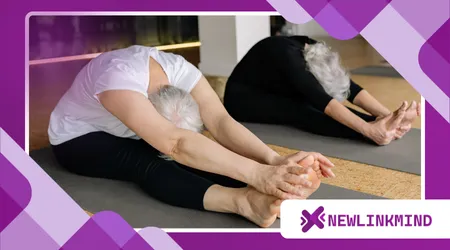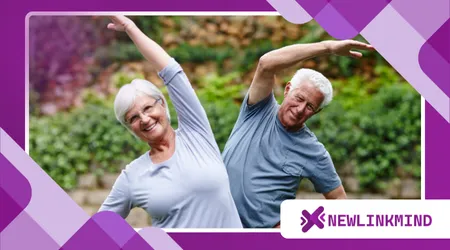Meditation and Yoga Nidra for Senior Relaxation

Anúncios
This is where Meditation and Yoga Nidra offer profound benefits. Aging brings unique challenges, from physical discomfort to emotional shifts. Finding peace becomes paramount.
These ancient practices provide powerful tools for senior relaxation. They guide us toward inner calm. We can truly unwind and let go.
The Journey Inward: Unpacking Meditation for Seniors
Meditation is more than just sitting still. It’s a journey of self-discovery. For seniors, it’s a path to tranquility.
It helps manage stress and anxiety. It also promotes emotional well-being. Regular practice can transform daily life.
Consider the gentle focus on breath. This simple act anchors us. It brings us into the present moment.
Anúncios
Many seniors find relief from chronic pain. Meditation alters pain perception. It empowers a sense of control.
Improved sleep is another common benefit. Restful nights become more attainable. The mind learns to quiet down.
Meditation cultivates mindfulness. This awareness extends beyond practice. It enriches every part of life.
Anúncios
It can also enhance cognitive function. Sharper focus and memory may emerge. The brain stays active and engaged.
Group meditation offers social connection. Shared silence fosters community. It combats feelings of isolation.
Starting small is key for seniors. Even a few minutes daily helps. Consistency builds lasting habits.
There are many accessible forms. Guided meditations are excellent options. They provide clear, gentle instructions.
Yoga Nidra: The Art of Conscious Deep Relaxation
Meditation and Yoga Nidra are distinct yet complementary. Yoga Nidra is often called “yogic sleep.” It is a state of deep relaxation.
It bridges the gap between waking and sleeping. The body rests, but the mind stays aware. It’s profoundly restorative.
For seniors, this can be revolutionary. It offers rest without effort. It recharges both mind and body.
Read more: Morning vs. Evening Meditation for Seniors: What Works Best?
Imagine lying comfortably still. A voice guides you through sensations. You release tension, layer by layer.
This practice reduces mental chatter. It calms the nervous system. Deep healing can then occur.
It can significantly alleviate insomnia. Sleep quality dramatically improves. Waking up refreshed is common.
Yoga Nidra can reduce chronic fatigue. Energy levels are gently restored. Life feels more vibrant and active.
It also supports emotional balance. Past traumas can be gently processed. A sense of peace emerges.
The practice doesn’t require physical exertion. This makes it ideal for seniors. Mobility is never a barrier.
It’s a powerful tool for stress reduction. The body enters a parasympathetic state. This promotes rest and digest.
Think of it like resetting a computer. All background processes halt. You start fresh with renewed clarity.

Synergistic Benefits: Unlocking Deeper Relaxation
Combining both practices amplifies benefits. Meditation prepares the mind. Yoga Nidra then deeply relaxes the body.
A mindful senior is a resilient senior. These tools build inner strength. They foster a calm, centered presence.
Read here: Restorative Yoga for Seniors: Deep Relaxation at Any Age
Research supports these ancient techniques.
A study published in the Journal of the American Medical Association in 2023 highlighted that mindfulness-based interventions significantly reduced perceived stress in older adults, emphasizing the physiological and psychological benefits of such practices.
This isn’t about avoiding life’s challenges. It’s about facing them with equanimity. Inner peace becomes an anchor.
Consider a seasoned sailor navigating rough seas. They don’t control the waves. They skillfully adjust their sails.
These practices teach us similar wisdom. We learn to navigate life’s currents. We remain steady amidst the storm.
They offer a sanctuary within ourselves. A place of quiet and stillness. Always accessible, always welcoming.
Practical Steps for Embracing the Practices
Starting can feel overwhelming. Begin with short, consistent sessions. Five to ten minutes daily is a great start.
Many apps and online resources exist. They offer guided meditations and Yoga Nidra. Explore to find what resonates.
Find a quiet, comfortable space. Minimize distractions. This aids concentration and relaxation.
Listen to your body’s needs. If lying down isn’t comfortable, sit. Adapt the practice to suit you.
Consistency truly is the secret. Small efforts accumulate over time. They create profound, lasting change.
Overcoming Common Hurdles
It’s natural for the mind to wander. Don’t judge yourself for this. Gently guide your attention back.
Patience is a virtue here. Results may not be immediate. Trust the process, and keep practicing.
Some days will feel easier than others. That’s perfectly normal. Every session is a step forward.
If physical discomfort arises, adjust. Use pillows for support. Comfort enhances the experience.
++ How Yoga Helps Seniors Maintain Balance and Prevent Falls
Remember, there’s no “right” way to meditate. It’s a personal journey. Find what works best for you.
Real-Life Transformations: Stories of Serenity
Consider Maria, 78, who struggled with chronic back pain. After incorporating daily Meditation and Yoga Nidra, her pain management improved dramatically.
She reported feeling more in control and less dependent on medication, enabling her to enjoy walks in the park again.
Then there’s Robert, 82, who felt isolated after his wife passed. He started attending a weekly guided meditation group at his community center.
The practice not only helped him process his grief but also fostered new friendships, bringing joy back into his life.
These stories underscore the potential. These practices are not just theories. They create tangible, positive changes.

The Broader Impact on Senior Well-being
Beyond relaxation, benefits extend widely. Improved emotional regulation is significant. Seniors navigate emotions with grace.
Enhanced cognitive function supports independence. Mental clarity helps with daily tasks. It promotes an active mind.
Strengthened immune response has been noted. A calm body often means a healthier body. Stress impacts immunity negatively.
Increased self-compassion is a beautiful outcome. Seniors learn to be kinder to themselves. This fosters inner peace.
A sense of purpose can re-emerge. Connection to oneself deepens. Life gains new meaning and depth.
Data Illuminates the Path
Here’s a look at how specific aspects of these practices can impact seniors:
| Aspect of Practice | Potential Benefit for Seniors |
| Mindfulness | Reduced anxiety, improved focus |
| Deep Breathing | Lower blood pressure, enhanced calm |
| Body Scan (Yoga Nidra) | Alleviation of muscle tension, better sleep |
| Intention Setting | Increased sense of purpose, positive outlook |
| Non-Judgment | Greater self-acceptance, emotional resilience |
This table illustrates the multifaceted advantages. Each element contributes to holistic well-being. The benefits are profound and interconnected.
The Future of Senior Wellness
The understanding of mind-body connection grows. These practices are gaining recognition. They are integral to healthy aging.
We are moving beyond merely treating symptoms. We are embracing holistic approaches. Prevention and well-being are prioritized.
Meditation and Yoga Nidra will become even more mainstream. They offer sustainable solutions. They empower seniors to thrive.
Are we not all deserving of peace in our golden years? These practices offer precisely that. They are gifts we can give ourselves.
Embracing Serenity
Embracing Meditation and Yoga Nidra is an investment. It’s an investment in your peace. It’s an investment in your well-being.
These powerful tools are accessible to all. They offer a pathway to deep relaxation. They unlock profound inner calm.
Start your journey today. Discover the serenity within. Live your golden years with grace and tranquility.
Frequently Asked Questions
Is there a “right” way for seniors to meditate?
A: No, there isn’t one “right” way. The best approach is what feels comfortable and sustainable for you.
Guided meditations are excellent for beginners, and you can practice sitting, lying down, or even gently walking.
How long should a senior meditate or practice Yoga Nidra?
A: Start with short sessions, even 5-10 minutes daily. As you get more comfortable, you can gradually increase the duration. Consistency is more important than length.
Can these practices help with chronic pain or mobility issues?
Yes, many seniors find that these practices help manage chronic pain by altering pain perception and promoting relaxation.
Yoga Nidra, in particular, requires no physical movement, making it ideal for those with limited mobility.
Are there any side effects to Meditation or Yoga Nidra?
Generally, these practices are very safe. Some people might experience increased awareness of discomfort or emotions initially, but this usually passes as they continue to practice. If you have concerns, consult your doctor.
Where can seniors find resources for guided Meditation and Yoga Nidra?
Many free and paid apps (like Calm, Headspace), YouTube channels, and local community centers offer guided sessions specifically for seniors. Libraries also often have resources available.
++ What are the benefits of yoga nidra for elderly people? Are there any special considerations that elderly people should take into account when doing yoga nidra?
++ Nidra Sound Healing Yoga Retreats in France
